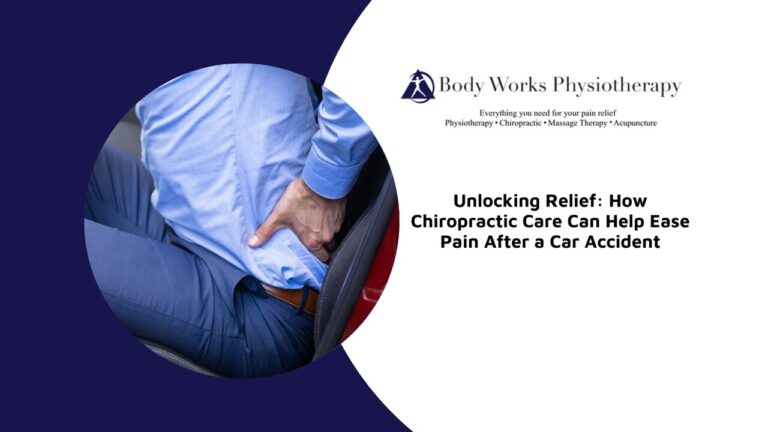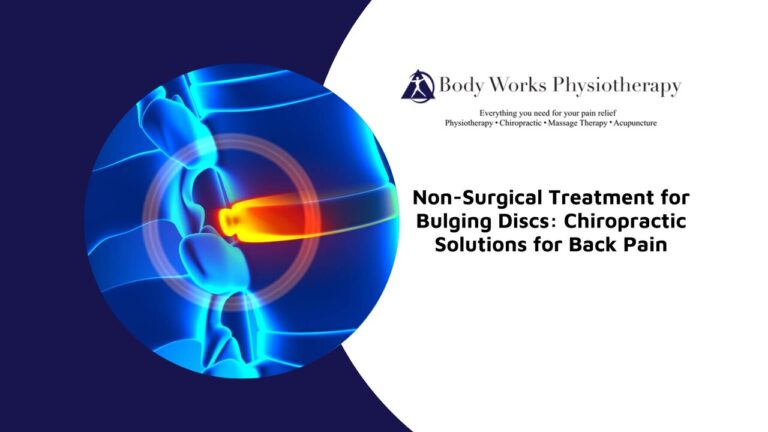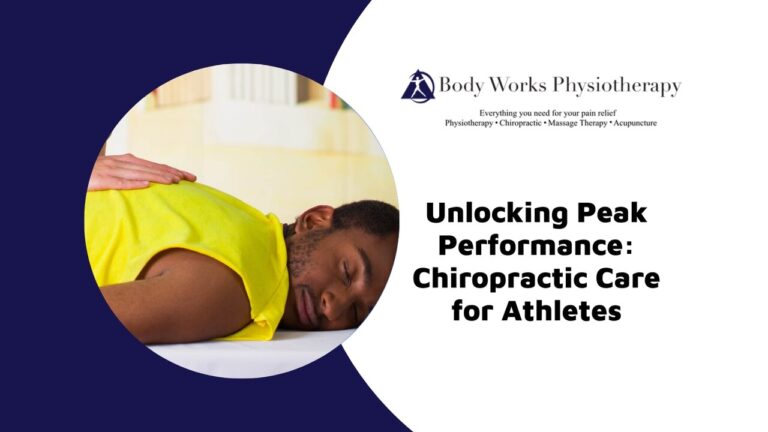
Upper back pain is a common issue that affects many people, often resulting from poor posture, muscle strain, or spinal dysfunction. Whether caused by sitting at a desk all day, repetitive movements, or an injury, upper back pain can impact daily life and limit mobility. In this blog, we explore how chiropractic care provides a safe and effective approach to relieving upper back pain, improving posture, and preventing future discomfort.
Benefits of Chiropractic Care for Upper Back Pain
Chiropractors specialize in assessing and treating musculoskeletal issues, including upper back pain. They offer a range of techniques to address the root causes of pain and discomfort:
- Inflammation Reduction: Techniques are employed to reduce inflammation in the affected area, which is crucial in relieving pain and discomfort.
- Improved Mobility: Chiropractors work on restoring the mobility of the spine and upper back through various treatments, enhancing overall movement and flexibility.
- Muscle Tension Relief: Chiropractors use manual therapy and other techniques to relax tight muscles, which are often a contributing factor to upper back pain.
- Posture Correction: By addressing spinal dysfunction, chiropractors help restore proper posture, which can prevent further strain and contribute to long-term relief from upper back pain.
Common Causes of Upper Back Pain That Chiropractors Address
Upper back pain can be caused by various factors, many of which chiropractors are trained to assess and treat. Some of the most common causes include:
- Poor Posture: Slouching or sitting for long periods can lead to dysfunction in the spine, contributing to upper back pain.
- Muscle Strain: Overuse or incorrect lifting techniques can strain the muscles in the upper back, leading to discomfort and pain.
- Herniated Discs: When discs between the vertebrae in the spine become damaged or ruptured, they can press on nearby nerves, causing pain and restricted movement.
- Pinched Nerves: Nerve compression in the upper back can cause pain, numbness, and tingling sensations, often radiating into the shoulders and arms.
- Repetitive Movements and Overuse Injuries: Repeating certain movements, especially in sports or work environments, can lead to strain and overuse injuries in the upper back.
- Poor Ergonomics: Sitting or working in an improper posture for extended periods, such as at a desk, can strain the upper back and lead to pain.
Chiropractic Techniques Used to Treat Upper Back Pain
Chiropractors employ various techniques to help alleviate upper back pain and address the root causes. Some of the most commonly used methods include:
- Spinal Manipulation: The primary chiropractic technique to address spinal dysfunction, restore function, and reduce pressure on nerves.
- Massage Therapy: Targeted soft tissue therapy that helps release muscle tension and promote blood circulation in the upper back.
- Myofascial Release: A technique that targets tight and restricted fascia (connective tissue) to release tension and improve range of motion.
- Stretching Exercises: Specific exercises designed to improve flexibility and range of motion, reducing muscle stiffness and promoting better movement.
- Postural Correction Exercises: A set of exercises to improve posture and body mechanics, preventing strain on the upper back and promoting long-term spinal health.
How Long Does It Take to See Results From Chiropractic Care for Upper Back Pain?
The time it takes to see results from chiropractic care for upper back pain varies from person to person. Some individuals experience immediate relief after their first session, while others may require a series of visits to achieve lasting results. The severity of the condition plays a key role—mild cases of muscle tension may show improvement within a few treatments, while chronic pain caused by deeper structural issues may take longer to resolve.
Typically, noticeable improvement can be seen within a few weeks of consistent care, with treatment plans often ranging from a few sessions to several months. The effectiveness of chiropractic care also depends on adherence to recommended lifestyle changes, such as stretching exercises, ergonomic adjustments, and posture correction techniques. Individuals who actively follow their chiropractor’s guidance, including at-home exercises and mobility drills, tend to experience faster and more sustained relief.
Additionally, factors like age, overall health, and daily activity levels can influence how quickly results are achieved. Younger individuals with a more active lifestyle may recover sooner, while those with pre-existing conditions such as arthritis or disc degeneration might require ongoing management. Regular assessments by the chiropractor ensure that treatment plans are adjusted as needed to maximize results and prevent setbacks.
Chiropractic Sessions for Upper Back Pain: What to Expect
A chiropractic session for upper back pain is typically a thorough and comprehensive process. During your visit, you can expect the following:
- Initial Assessment: The chiropractor will review your medical history and ask about your symptoms, pain levels, and lifestyle factors that may contribute to upper back pain.
- Physical Examination: The chiropractor will conduct a detailed examination of your spine and upper back, including a postural assessment and range-of-motion tests.
- Personalized Treatment Plan: Based on the evaluation, your chiropractor will create a customized treatment plan. This may include spinal mobilizations, exercises, and other techniques aimed at relieving pain and improving mobility.
- Ongoing Care: Your chiropractor will provide follow-up appointments and monitor progress. They may adjust the treatment plan as necessary to ensure the best outcomes for your upper back health.
Is Chiropractic Care a Safe Treatment Option for Upper Back Pain?
Yes, chiropractic care is generally considered a safe and effective treatment for upper back pain. Chiropractors are highly trained professionals who use non-invasive techniques to manage pain and improve function. Chiropractic techniques involve precise and controlled spinal manipulations, which help restore proper function and relieve pressure on the nerves and surrounding tissues.
When performed by a licensed chiropractor, these treatments carry minimal risk. Some people may experience mild soreness or stiffness following a session, similar to what is felt after a workout, but this typically subsides within 24 to 48 hours as the body adapts.
It is important to consult with your chiropractor about any underlying conditions before starting treatment. Individuals with conditions such as osteoporosis, spinal fractures, or severe disc degeneration may require modified treatment approaches to ensure safety. Chiropractors conduct thorough assessments, including medical history reviews, to determine the most appropriate treatment plan.
For pregnant individuals, seniors, or those with chronic conditions, chiropractic care can be safely tailored using gentle techniques that focus on mobility restoration without excessive force. Chiropractors may also incorporate complementary therapies like soft tissue massage, or targeted stretching exercises to further enhance treatment safety and effectiveness.
Relieve Pain, Improve Function
If upper back pain is interfering with your daily life, chiropractic care offers a natural, drug-free way to relieve discomfort and restore movement. By addressing the root causes of pain, chiropractors help improve posture, reduce muscle tension, and support long-term spinal health. At Body Works Physiotherapy in Scarborough, our experienced chiropractors provide personalized treatment plans to help you feel and move better. Schedule your appointment today and take the first step toward lasting relief.





